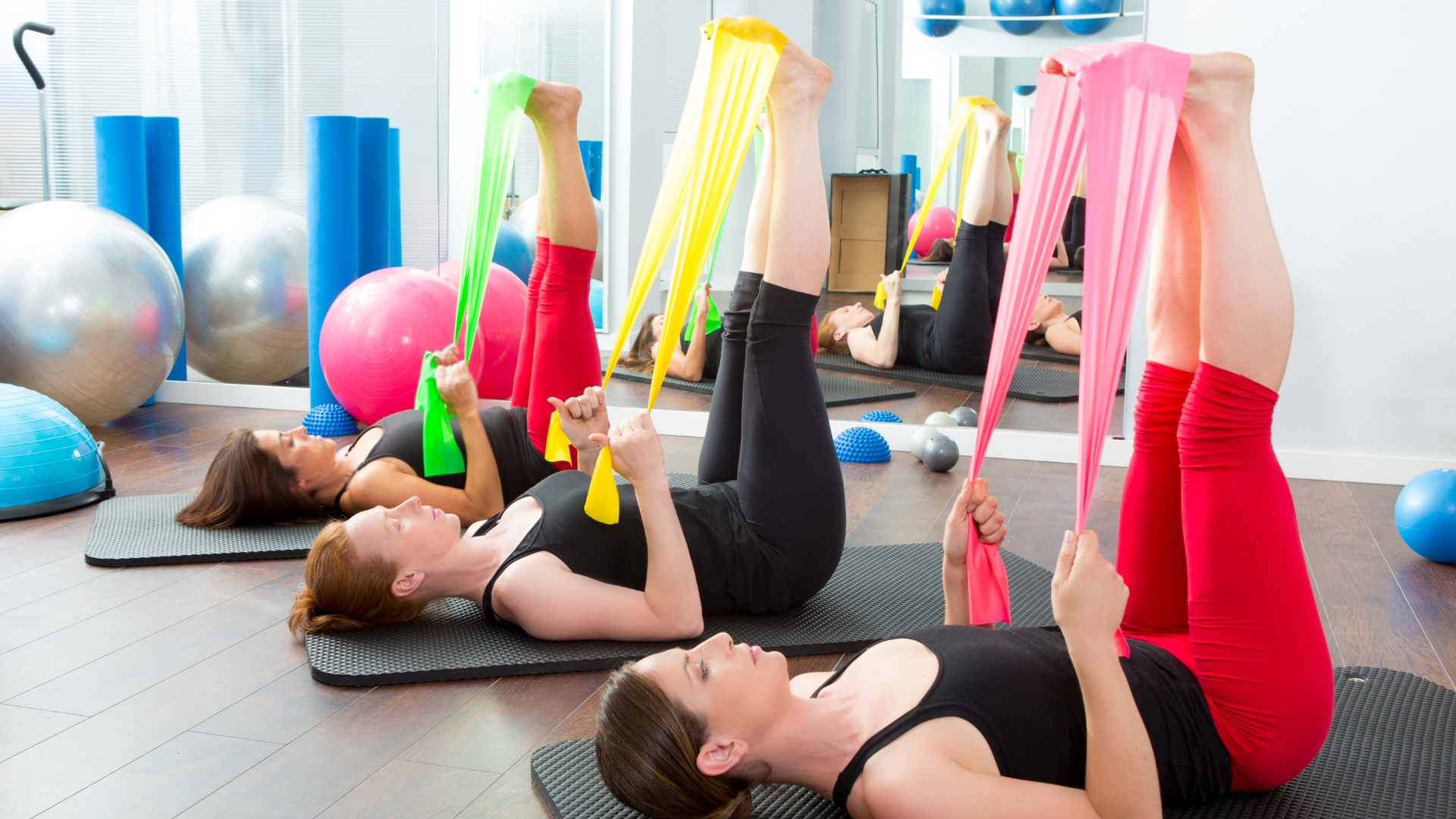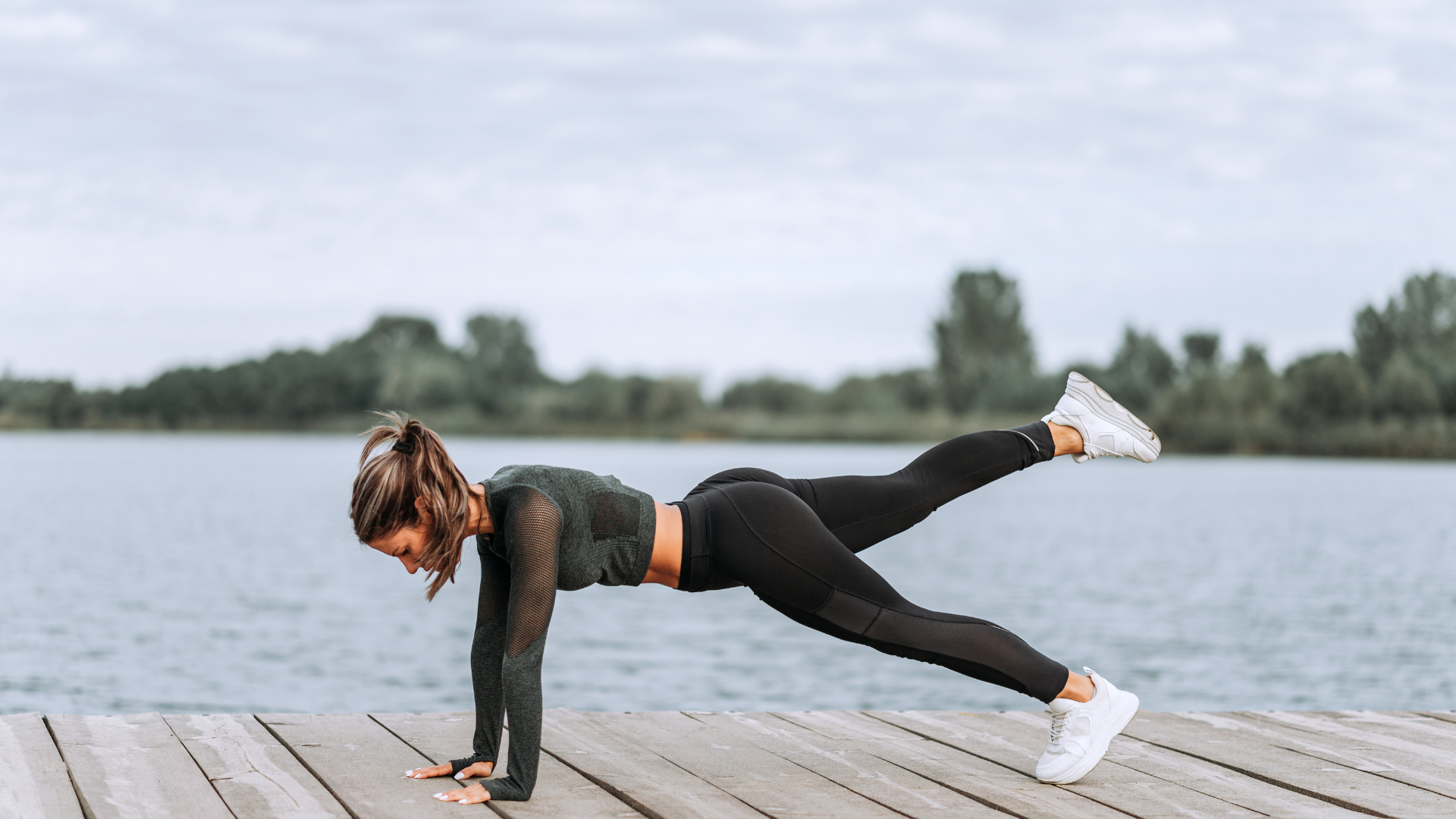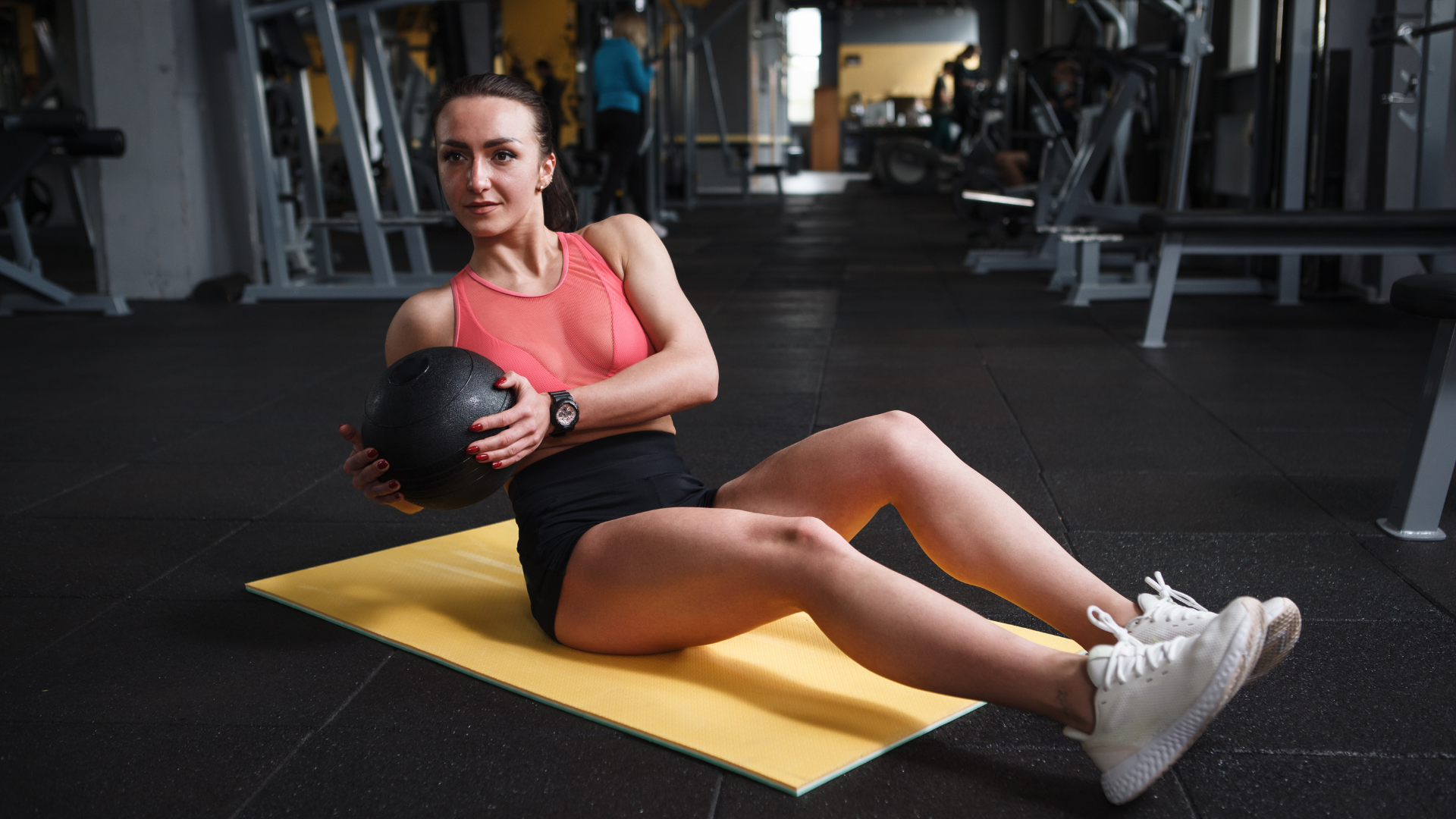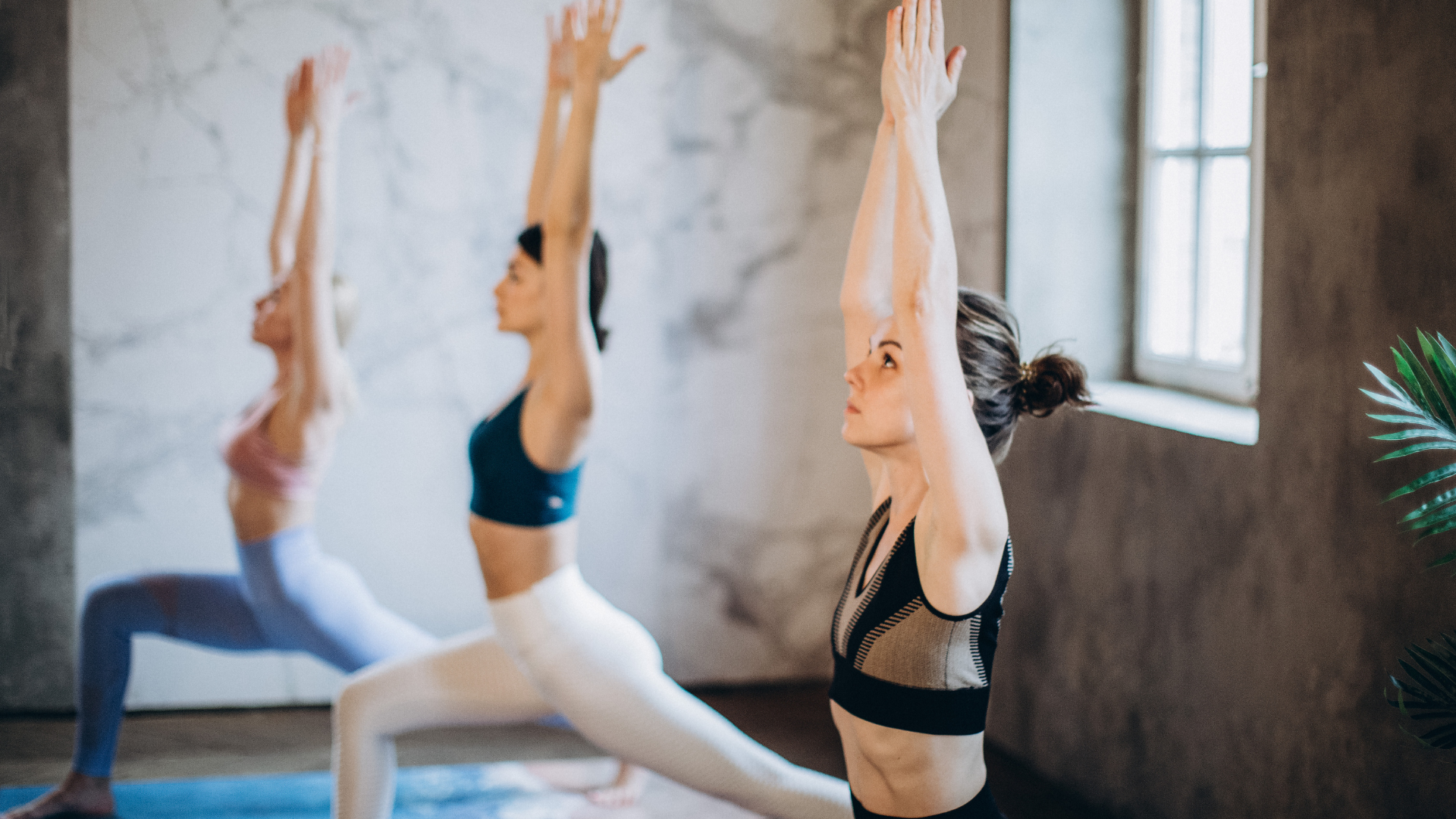One thing social media does best is pressure women to obtain unrealistic beauty and body composition standards. Social media feeds are filled with videos of women pointing to their ab definition saying, “do these moves to strengthen your core!”, while they’re wearing waist trainers and taking fat burners.
Don’t get us wrong, quite a few professionals present valuable information, but a lot of social media advice comes from unqualified “influencers” who don’t understand the nuances of female fitness and nutrition. If you’re finding it hard to sift through all the noise, follow these steps:
- Take a look at who is presenting the information. Is this person qualified or simply looking for clicks and likes?
- Look at the science! The research rarely lies and can be empowering.
- Does the information resonate with you? Or is it just influencing you to buy someone’s fitness programming or product?
There’s nothing wrong with wanting to tone up, but don’t let a six pack be the only reason you train your core. If aesthetics are a priority, and there’s nothing wrong if they are, this article in addition to the exercises below might be up your alley.)
So how do you approach your workouts, especially when it comes to strengthening your core? We’re glad you asked! Keep reading to learn five of the best women’s core strength exercises and how they will benefit you.

What Does Core Strength Mean?
Strengthening your core doesn’t just involve the abs contrary to what you might think. Having visible abs doesn’t even mean you have a strong core! Surprised? Click here for a quick explanation.
The “core” actually refers to your entire torso including your abs, obliques, back, hips, and glutes. Strengthening these muscles is essential for improving your balance, stability, weight-lifting mechanics and posture.
Building core strength is especially important for women, considering they can have smaller trunk muscle thickness. This increases their likelihood of experiencing lower back pain. A gender-specific research study even shows that lower trunk muscle mass correlates with lumbar disability, spinal imbalance and poor quality of life.
But this doesn’t have to be you! Empower yourself with knowledge and take care of your core!
Here are five of the best women’s core strength exercises to boost athletic performance and move through everyday tasks with ease. Building your abdominal muscles and getting some definition is just a bonus!
Core Exercise #1: Dead Bugs
Don’t be intimidated by the morbid name, dead bugs are a great exercise to strengthen your core.
How to Perform Dead Bugs
- Start by lying on your back.
- Bring your arms and legs closer to your trunk by extending your arms straight over your shoulders.
- Then, bring your knees to a 90-degree angle directly above your hips. This should look like an upside-down bear crawl!
- Engage your core muscles by pressing your lower back into the ground beneath you. You’ll feel like you’re tucking your pelvis and turning your ribs slightly inwards.
- Extend your right arm behind you towards the floor while simultaneously extending and dropping your left leg to the floor.
- Slowly and controlled, bring your right arm and left leg back to center.
- Repeat these movements using the left arm and right leg.
- This is one repetition.
- Try to do ten repetitions for two to three sets.
Benefits of Dead Bugs
Not only are you using your core muscles to stabilize yourself, but you’re also working the back muscles. Making sure you keep your back pressed into the floor while performing this exercise prevents your hip flexors from overcompensating, which can lead to lower back pain.
Added brain bonus: because dead bugs are a contralateral movement, you’re increasing communication between the left and right hemispheres of the brain!
Core Exercise #2: Plank Shoulder Taps
I know you probably saw the word “plank” and grimaced. We all know a plank minute is NOT the same as a regular minute. Somehow, it’s longer, or at least it feels that way.
However, this plank variation might just be what your workout routine needs to spice things up with a fun twist and recruit muscles you’re not used to!
How to Perform Plank Shoulder Taps
- Get into a regular plank position with your wrists directly beneath your shoulders.
- Ensure your hands and feet are about shoulder-width apart.
- Starting on either side, lift one arm and tap your opposite shoulder. Try to keep your body as still as possible.
- Return to a regular plank position.
- Repeat on the other side.
- This is one repetition.
- You can perform 10-15 repetitions for two to three sets.
- If doing this in a regular plank position feels uncomfortable or too challenging, you can drop down to your knees.
Benefits of Plank Shoulder Taps
This exercise might just hit every muscle, especially those that make up your core. Abdominals? Glutes? Arms? Shoulders? Yes to everything. This move also recruits those smaller stabilizer muscles you wouldn’t normally engage in an isolated ab exercise such as crunches.
In a small study, participants with low back pain participated in a core-strengthening program consisting of several plank exercises. After six weeks, many study subjects reported relief of symptoms related to pain and disability.
Core Exercise #3: Bicycle Crunches
If you’ve been in the health and fitness world for a while, you’re no stranger to bicycle crunches. They’re more fun than traditional crunches and require a little more coordination.
How to Perform Bicycle Crunches
- Start by lying on your back and pressing it into the floor to engage your abdominal muscles.
- Place your hands behind your head and support your head and neck while keeping your elbows wide.
- Slightly lift your shoulders and legs so they are hovering above the ground.
- Pull your right knee towards your center while simultaneously bringing your left elbow to meet it.
- Repeat this movement on the other limbs; bring your left knee to your right elbow.
- This is one repetition.
- Try to do 10-12 repetitions for two to three sets.
- Make sure to keep your shoulders and legs lifted the entire time to keep the tension on your core.
- The fluid movement of bicycle crunches should look exactly like the name intends: a bicycle pedal motion but with a cross-body crunch.
Benefits of Bicycle Crunches
Because bicycle crunches require opposite leg and arm movement, you’re improving your coordination and stability. The twisting movement in bicycle crunches strengthens your obliques which protect your spine, support your posture, and stabilize your ribcage and pelvis.
Core Exercise #4: Russian Twists
Like the bicycle crunches, Russian twists are going to call on those obliques and challenge your stability. Depending on your strength and familiarity with the exercise, there are several modifications you can make to meet your needs.
How to Perform Russian Twists
- Start by sitting on the floor or mat beneath you with your upper body upright and your legs stretched out ahead.
- Lean back slightly and make your way into a V position with your knees slightly bent hovering above the ground. Feel free to keep your feet on the floor if you need to.
- Twist your torso to one side, return to the center, then twist to the other side.
- This is one repetition.
- Try to do 10-12 repetitions for two to three sets.
- You can hold onto a dumbbell to really challenge your abdominal muscles.
Benefits of Russian Twists
Russian twists challenge your balance and help build stability in the spine. The rotational strength you build during this exercise can be transferred to other workouts like pilates and yoga. If you decide to challenge yourself by adding weight to the twist, you’ll hit your shoulders too!
Core Exercise #5: Supine Toe Taps
If you’re a frequent pilates-goer, you’re probably familiar with the supine toe tap. This move is the perfect addition to the exercises above because it engages the lower abdominals, making for a well-rounded core exercise routine for women.
How to Perform Supine Toe Taps
- Start by lying on your back with your arms and palms pressed down beside you.
- Lift your legs off the floor and bring them to a 90-degree angle directly above your hips.
- Slightly scoop your tailbone underneath you and press your lower back down into the floor to make sure your core is engaged.
- Lower your right foot to tap the ground while keeping your left leg in that 90-degree position and your back flat.
- Use your lower abdominals and other core muscles to return your leg to the starting position.
- Repeat on the left side.
- This is one repetition.
- Try to complete 10-12 repetitions for two to three sets.
Benefits of Supine Toe Taps
Supine toe taps are great for strengthening your deep core and even the pelvic floor. Strengthening the pelvic floor is beneficial for women because it supports the pelvis and all the organs around it. This could mean improved symptoms related to bowel movements, urinary incontinence and uterine prolapse.
Bonus: a strong pelvic floor is even associated with higher rates of satisfaction during intimacy.
Please keep in mind a single core exercise is not going to correct any pelvic floor issues. You should always consult with a healthcare professional before starting a new exercise routine.
Building a Strong Core for Everyday Life
The benefits of building a strong core as a woman, and the benefits of working out in general, extend well beyond the mat and looking good for social media. Here’s a recap of all the benefits of strengthening your core mentioned above, plus a few more:
- Strengthens and stabilizes the lower back
- Supports your balance
- Improves your posture
- Supports and strengthens pelvic floor muscles
- Improves your form during strength training and other exercises
- Reduces instances of pain
- Supports your mobility
- Protects your vital organs behind the abdominal wall
- Reduces your risk of injury as you age
This is your gentle reminder that aesthetics shouldn’t be the primary goal of building a strong core. Could strengthening your core lead to more pronounced abs and definition? Absolutely. But, the benefits of building a strong core extend far beyond that.
Try out the exercises above and watch as they positively shift the quality of your mechanics during other activities. Above all, remember this: don’t build a strong core to be a carbon copy of your favorite fitness influencer. Build a strong core to improve your everyday life!







